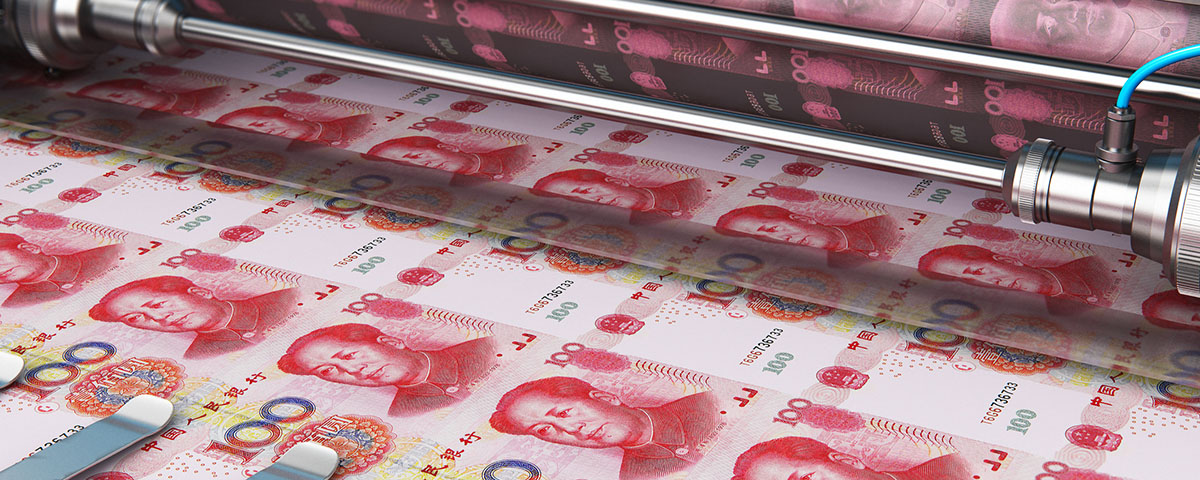
The National Team Says No More To The Stock Market’s Decline
7 Min. Read Time
Key News
Asian equities had another rough night on light volumes as South Korea, India, Thailand, Indonesia, and the Philippines posted losses of -1% or more.
Mainland China and Hong Kong posted modest losses on light volumes despite some intra-day volatility and some good news going into the session. Mainland media continued emphasizing Premier Li and the post-Central Economic Work Conference (CEWC) economic policy support releases. A Mainland financial publication noted the rotation into consumer stocks from technology stocks by Mainland mutual fund portfolio managers after the recent pro-consumption economic policy statements. One asset manager commented their pivot was driven by the “package of incremental policies that have been introduced” while “the fundamentals of domestic demand have been bottoming out and stabilizing” and the “current consumption industry expectations and valuations are generally at historic lows.”
Other news that had little to no effect included President Trump meeting with TikTok’s CEO while at a press conference, stating, “China and the United States can together solve all of the problems of the world.” There is no word if President Xi has accepted his inauguration invitation, though I believe he should attend just to stick to the media. I’ll be sure to ask Trump’s US Ambassador to China, Terry Branstad, on the subject as he and I are participating in a webinar hosted by global macro research firm Hedgeye at 11 am EST today (yes, the webinar is free! You can register here).
The only real excitement was the post-lunch market spike after Reuters reported that the Chinese government budget deficit will increase to 4% in 2025 from 2024’s 3% and reaffirmed the “around 5%” 2025 GDP target. The RMB 1.3 trillion of additional government spending was largely dismissed by the nattering nabobs of negativity, though remember this is the base case, meaning it can be higher if needed. The budget and other stimulus measures won’t be confirmed until March’s legislative Dual Sessions. The news led to a spike in Mainland China and Hong Kong, along with a spike in the National Team’s favored ETFs. Take a look at the intra-day chart of ticker 510330. The intra-day rally faded though the National Team ETFs saw an increase in volumes going into the close.
The National Team’s efforts/footprints are shown through Mainland mega-capitalization stocks outperforming large capitalization stocks, which outperformed mid-capitalization stocks, which outperformed small capitalization stocks. Why? Because the mega capitalization stocks “pull” indices higher rather than the market. This explains why the Mainland market might be higher if only 520 stocks went up today while more than 4,000 went down. I’ve been trying to tell investors it may not be best to buy all Mainland stocks; don’t buy 300 of them, just buy the 50 that count. Investors, along with my kids, don’t listen to me (actually, I am very blessed to have good kids, though knocking on wood).
It is worth noting that after the close, Mainland mega-capitalization stock futures were up +0.13%. Hong Kong felt the Mainland’s TLC had a healthy net inflow of $1.026 billion, though for the second day in a row, my data wasn’t uploading, so I couldn’t see which stocks were bought. Hong Kong's growth stocks were off, indicating that foreign investors remain on the sidelines and are infatuated with US stocks. Check out the WSJ article titled “A Quarter of Your Retirement Fund Just Isn’t Keeping Up,” which says, “US investors have pulled $3.3 billion from international stock exchange-traded funds and mutual funds while putting nearly $73 billion into US funds, according to Morningstar Direct.”
This is wrong, as a chunk of that $73 billion came from outside of the US, and the capitulation is global in nature. As a financial advisor in the article states, “The pain-to-benefit ratio isn’t worth it.” After 15 years/60 quarters of underperformance, who can hold on? The real problem is historically, non-US indices are all value/financial/energy overweight with no growth stocks/technology. The article notes that Bank of America strategists recommend Chinese and European stocks, though I bet no one is taking their advice. Maybe after New Year’s? Maybe after the inauguration? We shall see.
The Hang Seng and Hang Seng Tech fell -0.48% and -0.58%, respectively, on volume down -1.55% from yesterday, which is 101% of the 1-year average. 128 stocks advanced, while 352 declined. Main Board short turnover decreased by -4% from yesterday, which is 102% of the 1-year average, as 16% of turnover was short turnover (Hong Kong short turnover includes ETF short volume, which is driven by market makers’ ETF hedging). Value and large capitalization stocks “outperformed”/fell less than growth and small capitalization stocks. All sectors were negative, led lower by materials, down -1.5%, consumer staples, down -0.92%, and real estate, down -0.89%. The top sub-sectors were household/personal products, automobiles, and the chemical industry, while industry conglomerates, consumer staples, and media were the worst. Southbound Stock Connect volumes were 1.5x pre-stimulus levels as Mainland investors bought +$1,026 million of Hong Kong stocks and ETFs (apologies, as the data source for stocks and ETFs wasn’t uploading).
Shanghai, Shenzhen, and the STAR Board fell -0.73%, -1.72%, and -0.82%, respectively, on volume down -11% from yesterday, which is 148% of the 1-year average. 520 stocks advanced, while 4,670 declined. Large capitalization stocks fell less than growth, value, and small capitalization stocks. The top sectors were consumer staples, up +0.86%, consumer discretionary, up +0.77%, and industrials, up +0.48% while communication services fell -0.91%, real estate fell -0.86%, and healthcare fell -0.44%. The top sub-sectors were automobiles, liquor, and construction machinery, while education, retail, and leisure products were the worst. Northbound Stock Connect volumes were almost nearly 1.5X average. CNY and the Asia dollar index fell versus the US dollar. The Treasury bond curve flattened. Copper and steel gained.
Last Night's Performance
| Country/Index | Ticker | 1-Day Change |
|---|---|---|
| China (Hong Kong) | HSI Index | -0.5% |
| Hang Seng Tech | HSTECH Index | -0.6% |
| Hong Kong Turnover | HKTurn Index | -1.6% |
| HK Short Sale Turnover | HKSST Index | -4.4% |
| Short Turnover as a % of HK Turnovr | N/A | 15.7% |
| Southbound Stock Connect Net Buy/Sell (US $ Millions) | N/A | 1020.7 |
| China (Shanghai) | SHCOMP Index | -0.7% |
| China (Shenzhen) | SZCOMP Index | -1.7% |
| China (STAR Board) | Star50 Index | -0.8% |
| Mainland Turnover | .chturn Index | -11.2% |
| Nouthbound Stock Connect Net Buy/Sell (US $ Millions) | N/A | Not Available |
| Jing Daily China Global Luxury Index | CHINALUX Index | 0% |
| Japan | NKY Index | -0.2% |
| India | SENSEX Index | -1.3% |
| Indonesia | JCI Index | -1.4% |
| Malaysia | FBMKLCI Index | -0.6% |
| Pakistan | KSE100 Index | -1% |
| Philippines | PCOMP Index | -1.7% |
| South Korea | KOSPI Index | -1.3% |
| Taiwan | TWSE Index | -0.1% |
| Thailand | SET Index | -1.7% |
| Singapore | STI Index | -0.6% |
| Australia | AS51 Index | 0.8% |
| MSCI China All Shares Index | # of Stocks | Average 1-Day Change (%) |
|---|---|---|
| Hong Kong Listed | 152 | -0.56 |
| Communication Services | 9 | -0.64 |
| Consumer Discretionary | 30 | -0.5 |
| Consumer Staples | 13 | -0.92 |
| Energy | 7 | -0.2 |
| Financials | 23 | -0.3 |
| Health Care | 13 | -0.6 |
| Industrials | 19 | -0.86 |
| Information Technology | 10 | -0.77 |
| Materials | 10 | -1.5 |
| Real Estate | 6 | -0.89 |
| Utilities | 12 | -0.57 |
| Mainland China Listed | 432 | 0.12 |
| Communication Services | 9 | -0.91 |
| Consumer Discretionary | 31 | 0.77 |
| Consumer Staples | 27 | 0.85 |
| Energy | 16 | -0.18 |
| Financials | 63 | -0.15 |
| Health Care | 40 | -0.44 |
| Industrials | 69 | 0.48 |
| Information Technology | 85 | 0 |
| Materials | 68 | -0.05 |
| Real Estate | 7 | -0.86 |
| Utilities | 17 | -0.37 |
| US & Hong Kong Dually Listed | Ticker | 1-Day Change (%) |
|---|---|---|
| Tencent HK | 700 HK Equity | -0.7 |
| Alibaba HK | 9988 HK Equity | -1.1 |
| JD.com HK | 9618 HK Equity | -1.3 |
| NetEase HK | 9999 HK Equity | -0.8 |
| Yum China HK | 9987 HK Equity | 0.1 |
| Baozun HK | 9991 HK Equity | 27.7 |
| Baidu HK | 9888 HK Equity | -1.1 |
| Autohome HK | 2518 HK Equity | -5.8 |
| Bilibili HK | 9626 HK Equity | 0.5 |
| Trip.com HK | 9961 HK Equity | -0.2 |
| EDU HK | 9901 HK Equity | -1.2 |
| Xpeng HK | 9868 HK Equity | 0.3 |
| Weibo HK | 9898 HK Equity | -1.3 |
| Li Auto HK | 2015 HK Equity | -0.2 |
| Nio Auto HK | 9866 HK Equity | -1.8 |
| Zhihu HK | 2390 HK Equity | 0.2 |
| KE HK | 2423 HK Equity | -1.2 |
| Tencent Music Entertainment HK | 1698 HK Equity | -3.2 |
| Meituan HK | 3690 HK Equity | -0.6 |
| Hong Kong's Most Heavily Traded by Value | 1-Day Change (%) |
|---|---|
| TENCENT HOLDINGS LTD | -0.7 |
| MEITUAN-CLASS B | -0.6 |
| ALIBABA GROUP HOLDING LTD | -1.1 |
| XIAOMI CORP-CLASS B | -1.3 |
| AIA GROUP LTD | -0.7 |
| CHINA CONSTRUCTION BANK-H | -0.3 |
| CHINA MOBILE LTD | 0.3 |
| IND & COMM BK OF CHINA-H | -0.2 |
| CNOOC LTD | 1.7 |
| PING AN INSURANCE GROUP CO-H | -0.7 |
| Shanghai and Shenzhen's Most Heavily Traded by Value | 1-Day Change (%) |
|---|---|
| ZTE CORP-A | 5.8 |
| EAST MONEY INFORMATION CO-A | 0.5 |
| KWEICHOW MOUTAI CO LTD-A | 2 |
| VISUAL CHINA GROUP CO LTD-A | 4 |
| CONTEMPORARY AMPEREX TECHN-A | 2.5 |
| HYTERA COMMUNICATIONS CORP-A | -6.6 |
| GUANGDONG ADVERTISING GROU-A | -6.5 |
| TIANYU DIGITAL TECHNOLOGY-A | 10 |
| SHENZHEN WOER HEAT-SHRINK -A | 4 |
| EOPTOLINK TECHNOLOGY INC L-A | 1.1 |
Last Night’s Exchange Rates, Prices, & Yields
- CNY per USD 7.28 versus 7.28 yesterday
- CNY per EUR 7.64 versus 7.64 yesterday
- Yield on 10-Year Government Bond 1.72% versus 1.72% yesterday
- Yield on 10-Year China Development Bank Bond 1.79% versus 1.79% yesterday
- Copper Price +0.12%
- Steel Price +0.27%














